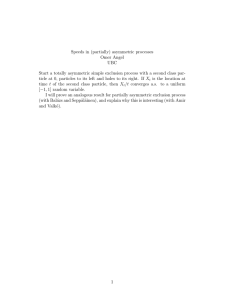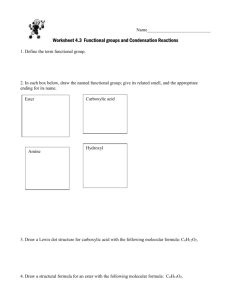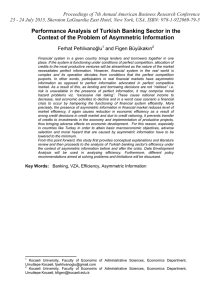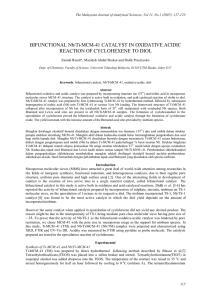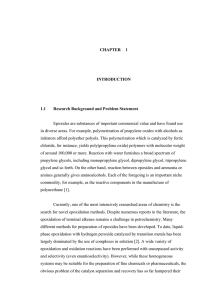Document 13169970
advertisement
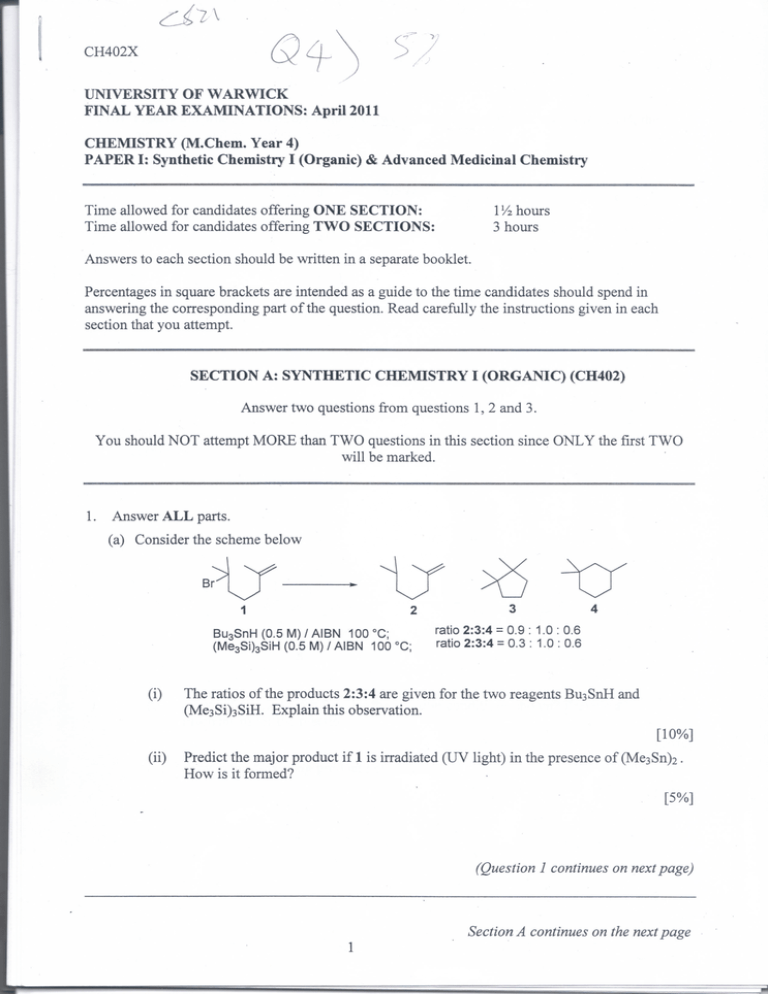
CH402X (c) An example of the Sharpless asymmetric epoxidation of allylic alcohols is illustrated below X)H HO -s>C°2Et HO (i) 100% conversion >90% ee 'C02Et Explain the roles of the titanium complex, the peroxide and the diester in the reaction. [10%] (ii) Using a Sharpless asymmetric epoxidation as the key step, design a synthesis of the molecule 9 from reagents 10 and 11. [20%] Ph ^ ^U Ph HN' 10 HO 11 (d) In the following reaction, the oc,p-unsaturated aldehyde 12 is reduced enantioselectively to 13, using the enantiomerically pure amine 14 as catalyst. 10mol%: Ph""^MX^Ph H 14 n O H 1.1 equivalents: 12 (i) -""N Me 13 Amine 14 catalyses the reaction by reacting with 12 to form a reactive intermediate. Draw the structure of this intermediate. [10%] (ii) Illustrate the mechanism of hydride transfer to the reactive intermediate formed between 12 and 14, and explain how the asymmetric reduction is controlled. [10%] Section A continues on the next page CH402X 3 . Answer ALL parts. (a) Using appropriate illustrations of the likely intermediate complex formed, explain why both the E- and Z-isomers of 15 are hydrogenated to the same major enantiomer of product 16 in the reaction shown below. Catalyst: o h A. Q -cr or OMe Z-15 Or E-15 OMe H2 O A NHH o R-16 [25%] (b) Enantiomerically pure 17 can be prepared using a three step sequence illustrated below: Catalyst: 1© C02Me 100%ee Asymmetric hydrogenation V1 4' (i) O A /C02Me O ^NMe Give a mechanism for the conversion of 18 into 19 and explain how asymmetric induction is achieved in the process. [25%] (ii) Provide a mechanism for the conversion of 20 into 17. (iii) Explain how the process could be modified to generate an enantiomerically pure diastereoisomer of 17. (Question 3 continues on next page) Section A continues on the next page 1 CH402X (c) Using a mechanism, illustrate how the oxazaborolidine 21 catalyses the formation of the diol product 22 in the reaction shown below. 10mol% catalyst: Ph Ph Ph O B—Me 21 HO H Ph Ph BH3 (2.0 molar equivalents) HO H Ph 22 [20%] (d) Using catalyst 21, propose a synthesis of amine 23 from the starting material 24. MeN- MeO MeO [20%] End of Section A. Section B continues on the next page


